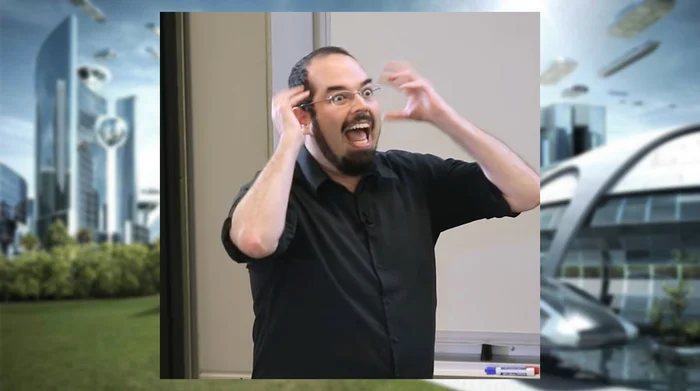
Parallel to this market, but with different options.
https://manifold.markets/lukalot/solution-for-the-fermi-paradox
And I'm stealing the criteria:
"Resolves when a solution to the Fermi Paradox is widely agreed upon in the scientific community in response to empirical evidence."
For context, the "Grabby Aliens" hypothesis is here for those who haven't heard of it:
https://grabbyaliens.com
People are also trading
another factor militating against longer planet durations is hydrogen escape. If a planet is massive enough to hold on to its hydrogen for billions of years, it will rarely have a thin enough atmosphere for light to reach the surface, and without photosynthesis your raw energy available for evolving life is reduced by at least 6 orders of magnitude
@JonathanRay and the probability of evolving intelligent life on a planet is probably not just a power-law on time, but a power law on the product of time*area*energy*otherconditions. Suboptimal planets (e.g., no light reaching the surface) can basically be ignored as having a negligible chance of evolving intelligent life.
@JonathanRay Yet another argument against longer lived planets creating grabby aliens is that they won't have enough U-235 to get any fission chain reaction started after ten billion years, and fission is probably the only good way to power interstellar travel. They might be able to bootstrap it with an accelerator and a fast breeder reactor with a very high breeder ratio, but that's so deep down the tech tree without any breadcrumbs along the way.
@JonathanRay earth is 4 billion years old and there's barely enough U235 left to achieve thermal criticality with the perfect moderator, without enriching it. With a half life of 0.7 billion years, the remaining U235 will be reduced by a factor of 380 by the time the earth is 10 billion years old. Our typical "depleted" uranium is 0.2%. Natural uranium in another 6 billion years will be around 0.004%
@JonathanRay Interestingly, if I do the calculation backwards, natural uranium was 23.67% U-235 when the earth formed. Could be a lot of natural fission reactors at those levels.
The longer-lived low-mass stars are flare stars incompatible with life because their luminosity varies over too wide of a range (multiple orders of magnitude) So it's a bit misleading for the grabby aliens paper to proceed from the assumption that the average star lives for 5 trillion years. To get out of the flare star range you need at least 0.6 solar masses which leads to a star lifespan of only 35 billion years.
Presently, we can only perceive ourselves as purely deterministic animals with no unique extent into the quantum multiverse. If there was an unavoidable multiverse ethics that concluded ‘grabby aliens’ was undesirable then by choice all aliens would, in almost every branch, look inward rather than expand outwards.
If building misaligned AI were a common failure mode for alien civs we ought to see some utilitronium shockwaves spreading out at significant fractions of the speed of light. D-T fusion with a Q-factor of infinity has a theoretical maximum specific impulse of about 10% c (any other kind of fusion being much worse) and U-235 fission would have a theoretical maximum specific impulse of 3% c. By the classical tsiolkovsky equation you need a ship that's 99.3% fuel to get to half the speed of light. Seems likely that even a superintelligent AI would not be able to make its utilitronium shockwave go faster than 80% of the speed of light.
@JonathanRay Nth stages can't get arbitrarily small because of the radiation from bumping in to interstellar neutral hydrogen atoms (which can't be deflected by magnets) at extreme velocities. At 80% of the speed of light a proton has a kinetic energy of 625MeV and interstellar medium contains ~10^6 atoms per cubic meter, so each cubic meter of cross sectional area gets 10^6 x 0.8 x 300,000,000 = 2.4E14 of those per second, for a total radiation flux of 625MeV x 2.4E14 = 24Kj per m^2 per second, and it would ablate your radiation shielding over time (normal cosmic radiation ablates spacecraft at micrometers per year, but this is ~1.5x10^9 times more than ordinary cosmic ray flux). The smaller the feature size of the electronics on board, the more vulnerable it is to destruction by radiation, and current electronics fail after ~0.1J/g of radiation, so you're going to need a lot of shielding. At least 10% of the incident proton energy will be converted to gamma rays, and lead has a gamma half-thickness circa 1cm, and if we assume 99% of incident gamma passes through the chip, you need to reduce the incident gamma flux by a factor of 240 for your chip to survive a year, so you need lg(240)=8cm of lead. This radiation problem gets arbitrarily worse as you get arbitrarily closer to the speed of light. You can mitigate it by 4 OOMs if you drive through an especially diffuse region of space, which doesn't exist in our vicinity. You could use lasers to ionize it before deflecting it with magnets, but any magnetic solution doesn't scale down well because the energy required & the resultant drag scales like r^2 but the energy available scales like r^3.
@JonathanRay not sure about the speed at which the shielding is ablated by radiation, and the entire subject is ungoogleable because it's dominated by the medical uses of radiation ablation. No matter how many minus medical keywords I put after radiation ablation, I still get 100% medical results
@JonathanRay Back of the envelope calculation for the rate of ablation of the radiation shield, assuming it's made of tungsten and 1/10th of the incident proton energy goes into vaporizing the tungsten:
heat of vaporization: 824 kJ/mol
molar mass: 183.84g
density: 19.3Mg/m^3
energy available for vaporization: 2.4kj/m^2/s
One square meter wide micrometer thickness of tungsten weighs 19g and costs 19g x 824kJ/183.84g = 85Kj to vaporize. This would take 85/2.4= 35 seconds. So the rate of ablation is one micron every 35 seconds, which is about 90cm per year. Your 8cm thick radiation shield might evaporate in a month.
@JonathanRay and even if you contrive some means to prevent evaporation, the shield will be converted to other elements through spallation and absorbing secondary neutrons at a rate in the ballpark of 1 mol per m^2 per year.
@Gigacasting most alien civilizations as smart as us would be increasing their intelligence via breeding, biotech, information technology, or other means

